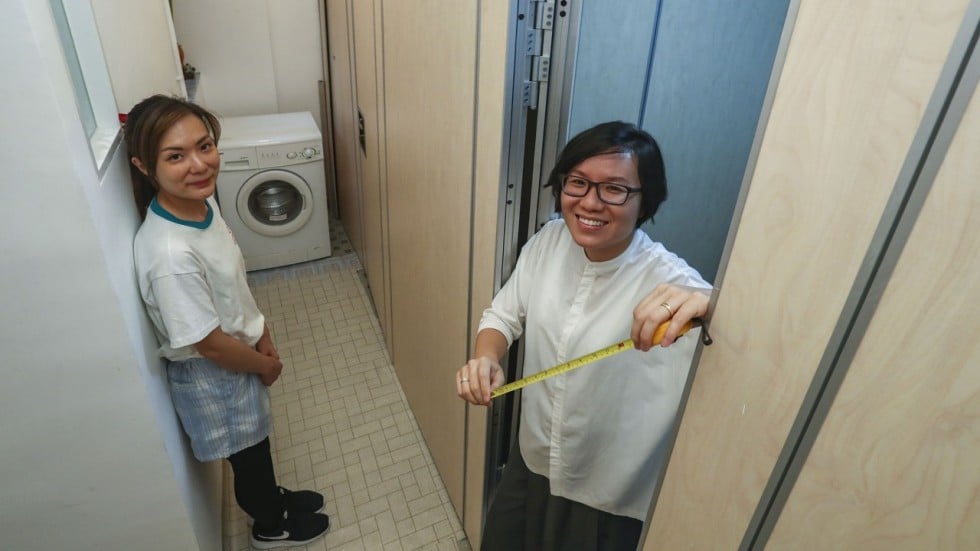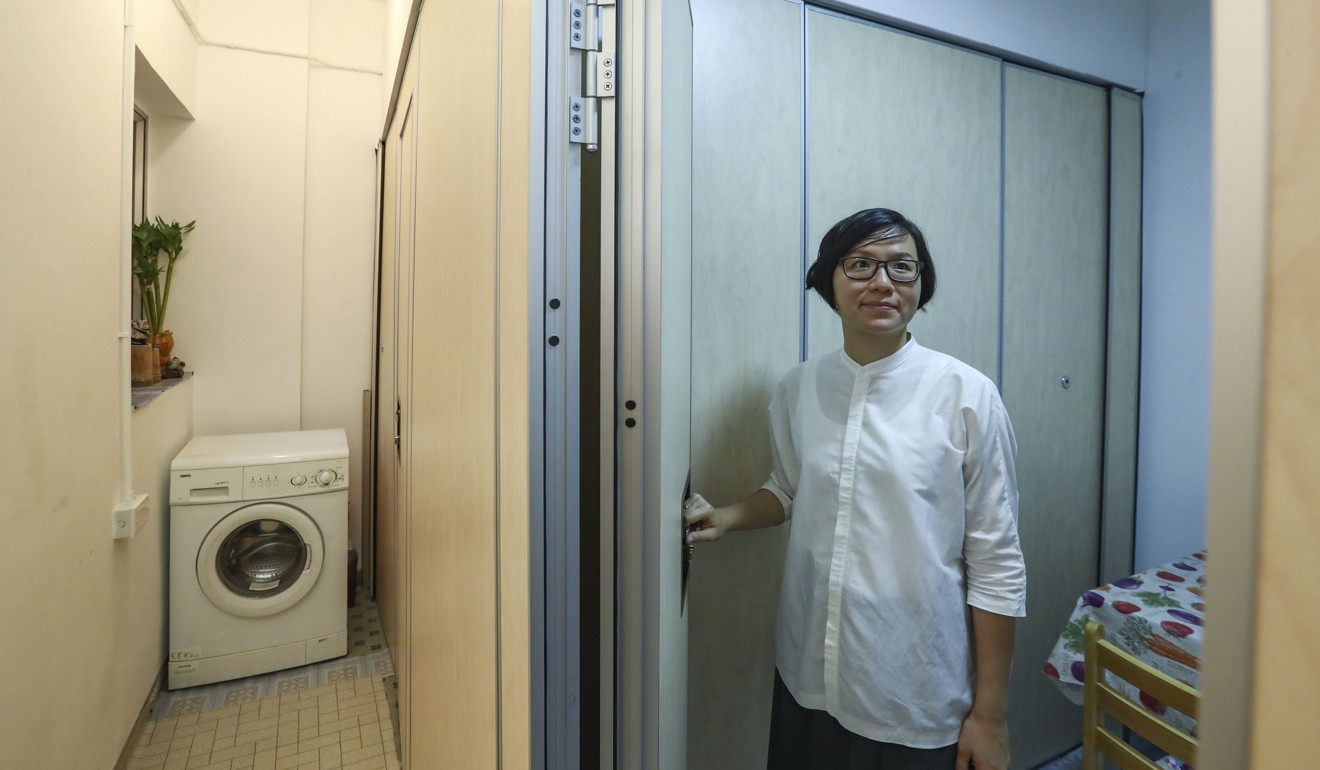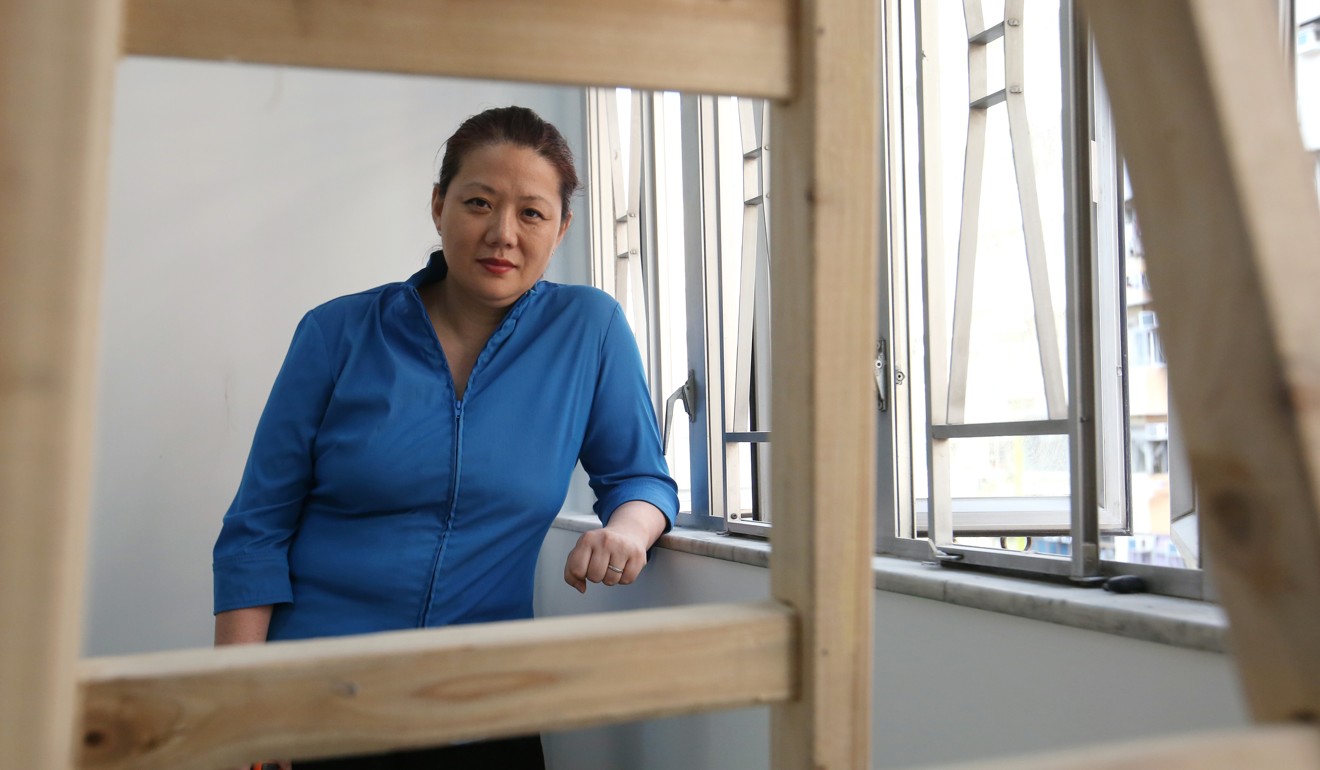
Single mother Chen Guiyan didn’t remember what it was like to sleep through the night until she moved out of her tiny, subdivided cubicle two months ago.
For three years, she and her son were holed up in a 100 sq ft flat in Kowloon City, right above a street lined with bars.
“The living conditions were just cramped and stuffy. We only had one window,” Chen recalled.
“People would get into fights all the time and we were never able to sleep properly.”
Chen’s life has had a 180-degree turnaround since she moved into a shared, renovated flat with an elderly couple just a few streets away.
The 560 sq ft flat, previously divided into four units, was redesigned and turned into a temporary flat for families in the queue for public housing, under a social housing scheme run by non-profit group Society for Community Organisation (SoCO).
Each family gets private space of at least 150 sq ft, while Chen’s kitchen and toilet are no longer crammed into the living room. The bedroom is separated from where they eat.
But Chen said the biggest change had been in her son.
“He used to be deeply unhappy and repulsed by the fact that he lived in a subdivided flat, and was afraid of letting others know. But since we moved here, I was so surprised he actually invited his classmates over to do homework,” she said.
One highlight of the renovated flat is the installation of two movable partitions which let the two families either share a bigger common living room or separate it into their own individual dining rooms for more privacy.
The architects said that feature stemmed from their people-oriented design, contrasting with the profit-driven approach which generally shapes subdivided flats.
“We wanted to design it in a way that would give them a sense of decency,” said architect Maggie Ma Kit-yi, who co-founded not-for-profit architecture firm Domat.
“Not only that, but we also have to think about how it suits their living pattern. Since these two families are strangers, they might not exactly get along, so we wanted to also give them the flexibility to be more open with each other to share space, or to have their privacy when they want it.”

The flat is one of 49 properties under SoCO’s social housing project, which is set to benefit more than 60 families. Residents usually only have to pay rent of about a quarter of their household income under the scheme, and are able to stay for a few years until they are allocated a public housing flat.
SoCO’s Jennie Chui Pui-yan, who is in charge of the project, said that one unexpected outcome they witnessed was families being able to develop better relations with their neighbours than before.
“One thing we realised that was quite surprising was that they became mutually more supportive and caring of each other. Before there were a lot of conflicts and complaints among those living in subdivided flats because of noise or hygiene,” Chui said.
“I think the collective responsibility for the shared flat and increased dialogue means they put in effort to actually try to understand each other and that helps reduce a lot of conflict.”
While co-living spaces have become a trendy notion for younger people around the world, in Hong Kong they have become temporary refuges for poor families escaping cramped and squalid living conditions.
With 210,000 people living in some 92,700 subdivided flats, the staggering demand for adequate housing means that NGOs have had to step in, despite a government pledge to explore the idea of converting industrial buildings into transitional housing.
Needy families to benefit from HK$35.7 million prefabricated housing project
The city’s largest social services provider, the Hong Kong Council of Social Service, last year announced a wider plan to provide 500 affordable flats as temporary housing for 1,000 poor households.
In another shared flat under that scheme, a team of architects designed the layout in a way that maximised living space for two families.
Instead of putting a wall straight down the middle between two rooms, architects were able to create space that could fit two queen-sized beds in each room, both of which were kept private.
They built a loft bed in one room, using the space that freed up under it for the bed in the other room.
University of Hong Kong associate professor Du Juan, who led the team, said she hoped their design could show others that there were decent alternatives to badly subdivided flats.
And she said it was important to find short-term design solutions that made it easier to live in small spaces.

“A lot of people say living in subdivided flats is not humane, and I have had colleagues question whether we were perpetuating awful conditions. But my answer is this: they’re already living there; this is the reality. It’s better to do something to search for answers than to stand aside and say it shouldn’t be like this,” Du said.
“This is not an ideal solution, but I hope in the long term by doing these projects, it can influence others to do things differently.”








